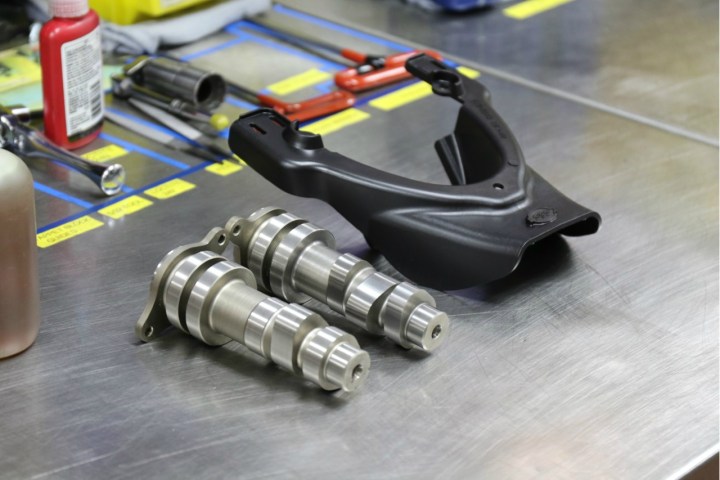
The new addition to the Made For Victory accessory line is called the S&S Stage 2 Performance Cam Kit. It was designed to ramp up performance without losing engine response or adding any roughness. It is used in conjunction with the Victory Stage 1 Tri-Oval Exhaust or Victory Stage 1 Round Exhaust (sold separately) to generate 20 percent more horsepower and 10 percent more torque. The Freedom 106 motor has proven to be a solid base for performance upgrades, making it ideal for this enhancement.
The kit includes front and rear cams, a high-flow air dam designed specifically for this setup, and a calibration download card for the installer. The kit is currently available in 49 states, as it is awaiting CARB approval for sale in California. Dealer installation is required, and it comes with a one-year warranty.
“Making power is what we do and we’re excited to partner with Victory in their efforts to expand their performance product range,” said David Zemla, vice president of marketing at S&S Cycle.
Made For Victory accessories and products carry factory approval when used on Victory motorcycles, meaning the parts have fulfilled quality, emissions, and safety requirements. In addition, use of these aftermarket products will not affect your motorcycle’s warranty.
“Made For Victory products allows Victory Motorcycles to partner with some of the top suppliers in the motorcycle industry,” said Brandon Kraemer, product manager for Victory Motorcycles.
“This kit requires no additional Dyno tuning or aftermarket assistance, and completely removes the normal trade-off of performance versus drivability that is common when installing different cams. An additional benefit to the rider is a less costly upgrade vs. the aftermarket, with the production fuel system being utilized as it was designed to be without any further components.”
Made For Victory parts are designed exclusively for Victory’s line of bikes, and are designed through partnerships with manufacturers selected by the company.
The Victory Performance Cam Kit is available at dealerships for $550.
Editors' Recommendations
- Damon’s Hypersport shape-shifting motorcycle made me feel like a kid again
- Arlo’s smart security cams take a bite out of Apple, finally add HomeKit support


